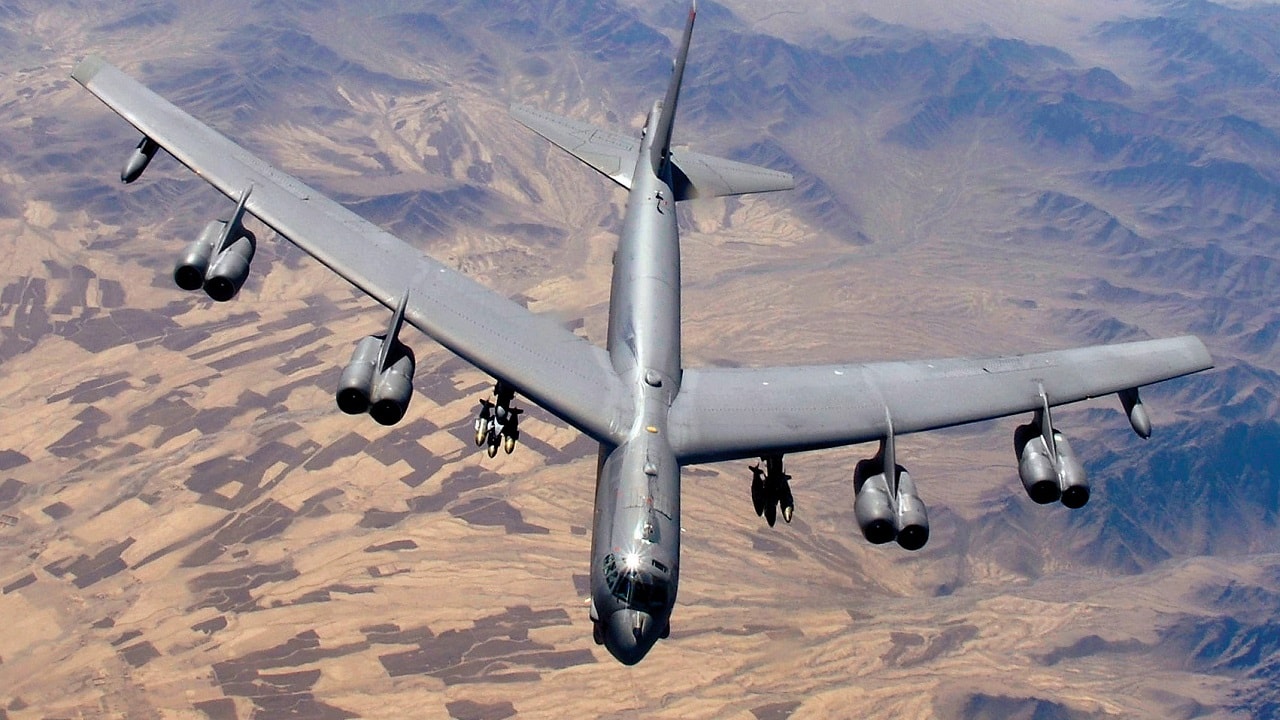The U.S. Air Force’s B-52s Were on Another European Tour – And Will Remain in Service For at Least 100 Years: Even after nearly 70 years in service, the United States Air Force’s B-52 Stratofortress remains the workhorse of the bomber fleet – and will likely continue to serve in that role for at least another three decades.
Last week, a B-52 flew over the Gulf of Finland as part of a “strategic deterrent” flight to Russia and a show of support to Finland.
At one point during the flight, the long-range heavy bomber was just 200 km (124 miles) from the Russian city of St. Petersburg.
“In general, we have good knowledge of the situation and good cooperation with NATO, so there are no surprises here,” Finnish Defense Minister Kaikkonen told local media, adding that these types of flights are normal. “This is about maintaining a kind of strategic deterrence.”
The flight comes as Finland, and its neighbor Sweden, continue to seek NATO membership. It occurred just days after a pair of B-52 aircraft from the 23rd Expeditionary Bomb Squadron integrated with NATO allies in Eastern Europe.
The bombers, which are forward deployed to Moron Air Base, Spain, for a Bomber Task Force deployment, flew down the Mediterranean and then proceeded to Bulgaria for integration with Bulgarian Armed Forces to help in strengthening NATO posture in Eastern Europe.
The aircraft then flew over Romania to take part in a NATO exercise. Upon the conclusion of the NATO exercise in Romania, the Stratofortresses continued their mission into Hungarian airspace enhancing the readiness and training necessary for the aircrew.
These Bomber Task Force missions are meant to prove and reinforce the U.S. Air Force’s interoperability with NATO allies while maintaining common air awareness in the EUCOM area of operation.
“Bomber Task Force missions highlight U.S. capabilities and commitment to work closely with our allies and partners,” said Maj. Douglas Hulsey, Bomber Task Force planner. “Working together with our NATO counterparts allows us to optimize our combined capabilities while deterring aggression against NATO.”
The B-52 certainly logs the miles, as another nuclear-capable Stratofortress took part in joint operations with South Korea earlier this month.
B-21 Raider Coming, B-52 Not Going Away
Even as the future Northrop Grumman B-21 Raider is set to enter service by the end of the decade – and will then become the “backbone” of the bomber fleet – the Stratofortress will continue to serve as a deterrent to China, Russia, and other potentially hostile nations around the world.
Earlier this month, the head of the Air Force Global Strike Command (AFGSC) Gen. Thomas A. Bussiere reaffirmed that the Cold War-era bomber will remain in service for decades to come. However, Bussiere was quick to address that it won’t be the same old aircraft.
“We’re updating everything—new radar, engines, upgraded communications, and datalink capabilities,” he said in an interview with Air & Space Forces Magazine.
Moreover, even though it lacks stealth capabilities, its large payload and ability to carry a wide variety of munitions, including long-range standoff missiles and hypersonic weapons, will ensure it can continue to be the workhorse in the sky for the Air Force.
As a result, the legendary B-52 could reach 100 years in service by the time the platform is finally retired.
MORE: F-35 – The Best Fighter Jet Ever?
MORE: SR-72 – A Mach 6 Bomber?
MORE: Su-57 – Is Russia’s Stealth Fighter Doomed?
Author Experience and Expertise:
A Senior Editor for 19FortyFive, Peter Suciu is a Michigan-based writer. He has contributed to more than four dozen magazines, newspapers, and websites with over 3,200 published pieces over a twenty-year career in journalism. He regularly writes about military hardware, firearms history, cybersecurity, politics, and international affairs. Peter is also a Contributing Writer for Forbes and Clearance Jobs. You can follow him on Twitter: @PeterSuciu.

